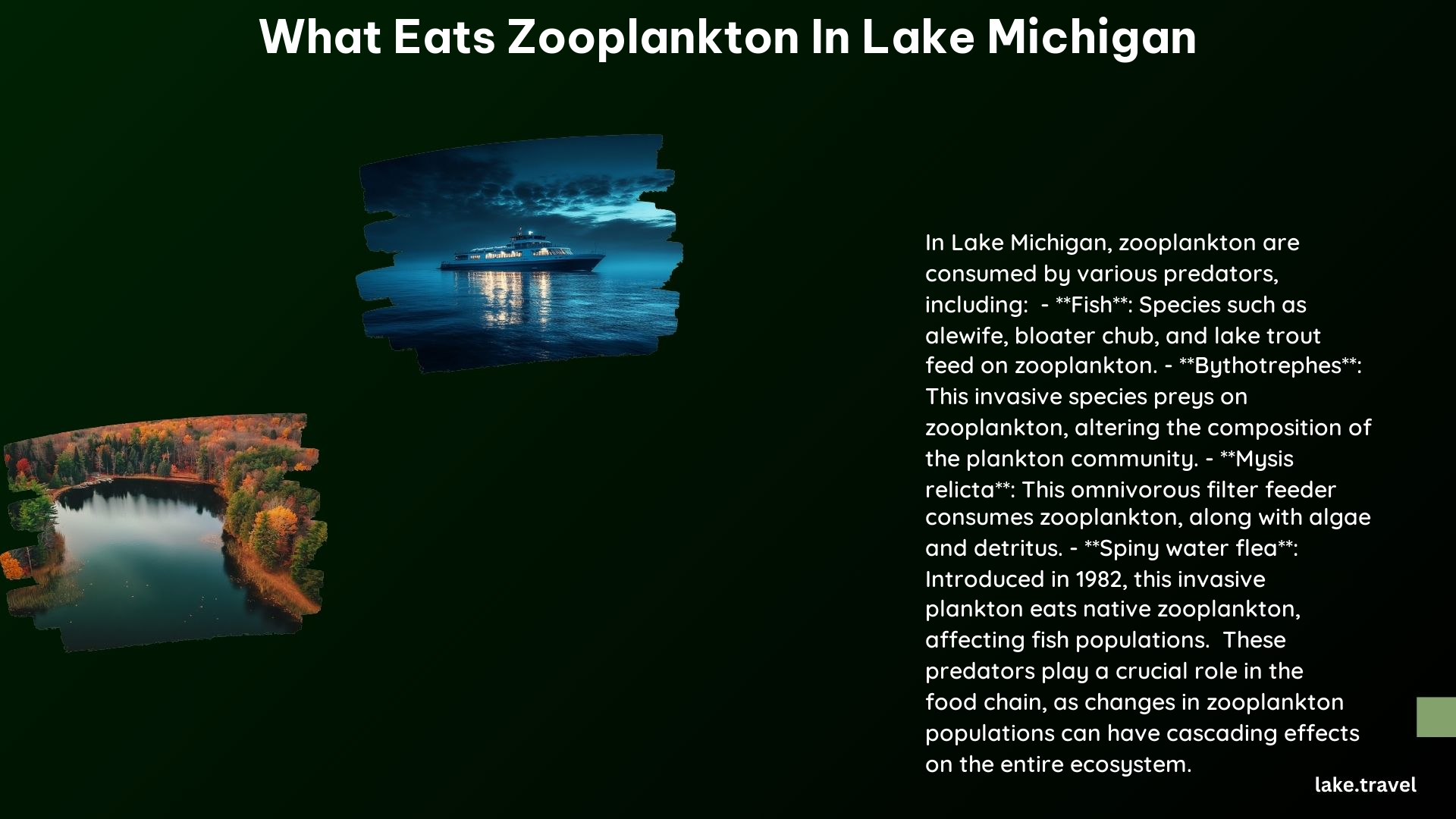Zooplankton are tiny, free-floating organisms that play a crucial role in the aquatic food web of Lake Michigan. These microscopic creatures are the primary consumers in the lake’s ecosystem, feeding on phytoplankton and serving as a vital food source for a variety of predators. In this blog post, we’ll explore the diverse array of organisms that feed on zooplankton in Lake Michigan, providing a comprehensive understanding of the intricate relationships within this dynamic ecosystem.
Fish: The Primary Consumers of Zooplankton

Fish are the dominant predators of zooplankton in Lake Michigan. Several species, including alewives, bloater chubs, and yellow perch, rely heavily on zooplankton as a primary food source, particularly during their early life stages.
Alewives
Alewives are a small, herring-like fish that are abundant in Lake Michigan. These fish are known to feed extensively on cladoceran zooplankton, such as Daphnia galeata mendotae, which can make up a significant portion of their diet.
Bloater Chubs
Bloater chubs are another important fish species in Lake Michigan that consume zooplankton. These fish primarily feed on cladocerans and copepods, playing a crucial role in the transfer of energy from the zooplankton community to higher trophic levels.
Yellow Perch
Yellow perch are a popular sport fish in Lake Michigan, and they also rely on zooplankton as a food source, especially during their early life stages. These fish feed on a variety of zooplankton, including cladocerans and copepods.
Invasive Predators: Bythotrephes and Mysis relicta

In addition to native fish species, Lake Michigan has also seen the introduction of invasive predators that feed on zooplankton, further altering the ecosystem’s dynamics.
Bythotrephes
Bythotrephes, also known as the spiny water flea, is an invasive zooplankton species that has become established in Lake Michigan. This predatory zooplankton feeds on other zooplankton, including cladocerans and copepods, contributing to changes in the zooplankton community composition.
Mysis relicta
Mysis relicta, or the opossum shrimp, is another invasive species that has been introduced to Lake Michigan. This omnivorous zooplankton species consumes a variety of food sources, including algae, detritus, and other zooplankton, making it a significant predator in the lake’s food web.
Native Zooplankton Predators
While fish and invasive species are the primary consumers of zooplankton in Lake Michigan, there are also native zooplankton species that prey on other zooplankton, contributing to the complex food web.
Copepods
Certain copepod species, such as calanoid copepods, are known to feed on other zooplankton, including cladocerans. These predatory copepods play a role in regulating the populations of their zooplankton prey.
Rotifers
Rotifers, another group of microscopic zooplankton, can also act as predators, consuming smaller zooplankton species like protozoans and algae.
The Importance of Zooplankton Predation
The predation of zooplankton by various organisms in Lake Michigan is crucial for maintaining the balance and stability of the ecosystem. Zooplankton serve as the primary consumers in the lake’s food web, converting the energy stored in phytoplankton into a form that can be utilized by higher trophic levels, such as fish.
By consuming zooplankton, predators play a vital role in regulating the populations of these microscopic organisms, preventing them from becoming overly abundant and disrupting the delicate balance of the ecosystem. This predation also helps to transfer energy and nutrients up the food chain, supporting the growth and development of larger organisms, including commercially and recreationally important fish species.
Furthermore, the introduction of invasive predators, such as Bythotrephes and Mysis relicta, has had significant impacts on the zooplankton community in Lake Michigan. These invasive species can outcompete and prey upon native zooplankton, leading to changes in the overall composition and dynamics of the zooplankton population. Understanding the role of these predators is crucial for managing and conserving the ecological integrity of Lake Michigan.
Conclusion
Lake Michigan’s zooplankton community is a vital component of the lake’s ecosystem, serving as a crucial food source for a diverse array of predators. From native fish species to invasive zooplankton predators, the predation of zooplankton plays a crucial role in maintaining the balance and stability of the lake’s food web. By understanding the complex relationships between zooplankton and their predators, we can better manage and protect this important aquatic ecosystem for generations to come.
